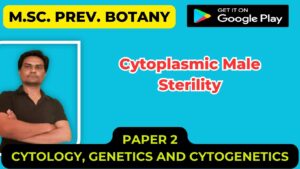Random Mutagenesis
Transposon Tagging Strategies
- In random mutagenesis, transposons are mobilized to create a library of individuals with different transposon insertions.
- Then the library of insertions is screened for mutant phenotypes of interest.
- In a two-element system, transposons are mobilized by putting stable transposase into the background of the nonautonomous transposons, either by genetic crosses or, in the case of the Drosophila P element, by microinjecting the transposase into an embryo containing nonautonomous elements (9).
- In other organisms, growth at low temperature mobilizes transposition. Dominant visible mutations are seen in the M1 generation, and recessive visible mutations are seen segregating in the M2 progeny of M1 individuals.
- Individuals containing a transposed element are often termed “transposants”.
Directed Mutagenesis
- There are two types of directed tagging schemes.
- In both cases, the target gene has been identified previously by its mutant phenotype.
- In the first type of directed mutagenetic scheme, insertion into a specific gene is selected for by crossing an individual homozygous for the previously identified recessive mutation with a wild-type individual carrying an autonomous transposon (alternatively, an individual carrying both a stable transposase source and the mutation of interest is crossed with a wild-type individual carrying a nonautonomous transposon).
- The next generation, the M1, is screened for individuals exhibiting the mutant phenotype.
- These individuals carry both the original mutation and a new transposon-induced allele of the same gene.
- The second type of directed mutagenetic experiment is useful in systems where the transposon is known to move preferentially to linked sites on the chromosome.
- A mapped transposable element that is known to be linked to the gene of interest is mobilized.
- Insertions into the gene of interest are identified in the M1 by the strategy outlined previously, or the linked transposon is mobilized in a wild-type background, and the M2 is screened for mutations. In either case, if there is a strong preference for transposition to linked sites, the frequency of mutations induced in the specific gene should increase relative to a random tagging procedure.
Cloning tagged genes:
From insertion to sequence
- The first step in cloning a tagged gene is to identify a transposon linked to the mutation.
- This is done by Southern blotting DNA from progeny obtained from the putatively tagged mutant.
- A transposon-specific probe probes the blot to identify a band present in the homozygous mutant progeny and absent in wild-type progeny that do not segregate for the mutant phenotype.
- If many transposons segregate in the background, finding a transposon linked to the mutant phenotype is difficult.
- A large number of progeny need to be examined, or the mutant must back-crossed to a strain lacking transposons to segregate background transposons.
- Once a linked transposon is identified, there are a number of different ways to clone the gene in which a transposon has inserted.
- Three commonly used methods are described here.
Plasmid rescue.
- If the transposon used for tagging contains part of a selectable plasmid (eg, pBR322) at one end of the transposon, plasmid rescue is used to isolate a fragment of flanking host DNA.
- Genomic DNA from the tagged individual is digested with a restriction enzyme that releases the selectable plasmid from the transposon but does not cut within the plasmid itself. This creates a linear piece of DNA containing the plasmid sequence and a small fragment of flanking host DNA.
- The products of the digestion are religated at a high dilution to ensure intramolecular ligation products.
- The ligation products are transformed into E. coli, and then the cloned flanking DNA is isolated.
- Inverse polymerase chain reaction (IPCR).
- IPCR is another method for isolating host sequences flanking a transposon insertion.
- As for plasmid rescue, genomic DNA from a tagged individual is isolated and digested with a restriction enzyme that releases the end of the transposon and a piece of adjoining host DNA.
- Ligation is used to circularize the linear host DNAtransposon fragment. PCR using two transposon-specific oligonucleotide primers, each reading outward from the ends of the transposon sequence into the flanking DNA, are used to amplify the flanking host DNA.
- Then the amplified product is cloned.
Library screening.
- A third option is to make a library using genomic DNA from the tagged mutant that has been digested with an enzyme that does not cut within the inserted transposon.
- The recombinant vector containing the transposon also contains some flanking host DNA.
- A transposon-specific probe is used to screen the library and identify clones containing the transposon and the flanking DNA.
Confirmation
- Once the flanking host DNA is cloned, it should be used to probe Southern blots of DNA extracted from homozygous mutant and wild-type plants to look for a band difference, indicating transposon insertion into the complementary sequences in the mutant.
- This is done to prove that the cloned DNA actually represents the host DNA flanking the transposon and is not an artifact of cloning.
- Then the cloned flanking sequences are sequenced directly or used as probes to obtain full-length sequences for further analysis.
- If the transposon has not inserted into the coding sequence of the disrupted gene itself (or in the case of an enhancer trap, if the transposon is not in a gene), it is necessary to use the flanking sequences for initiating chromosome walk to identify the gene of interest.
- The most convincing way to prove that a mutant phenotype results from transposon disruption of the cloned gene is to rescue the mutant phenotype by transforming the cloned gene back into the mutant. It is also possible to isolate and analyze different alleles of the gene from independently derived mutants.
- If all of the mutant alleles harbor mutations in the cloned gene, it is good evidence that the correct gene has been identified.
- Phenotypic revertants that show a loss of the transposon from the cloned sequence, when they are examined by sequencing or Southern blotting techniques, also confirm the identity of the tagged gene.
- In the case of enhancer-trapped genes, where there is no mutant phenotype associated with the insertion, expression analysis of the cloned gene should closely mimic that of the enhancer-trap reporter gene.
Transposon Tagging Strategies: From Gene to Mutant
Site-Selected Mutagenesis
- Often a gene is identified based on the basis of its expression pattern or its homology to another gene, but its phenotype is unknown.
- The goal of site-selected mutagenesis is to obtain a transposon insertion into a gene of known sequence to obtain an idea of the null phenotype of the gene.
- To obtain a site-selected mutation in a gene of interest, a large population of transposants is generated and divided into pools.
- Two types of primers are needed for the PCR reaction:
- (1) primers specific to the gene of interest and
- (2) transposon-specific primers, one reading “out” from each end of the transposon into the host DNA flanking the insertion. PCR is performed using one gene-specific primer, one transposon-specific primer, and DNA obtained from a pool of transposants.
- If an individual has an insertion in or near the gene of interest, the gene-specific primer and the transposon-specific primer are positioned so that a PCR product is amplified.
- Nested primers are often used to ensure specificity of the amplified band.
- Then pools of transposants from which a product is amplified are subdivided and rescreened until a single individual harboring the insert is obtained.
- Because the original individuals are often dead by the time tagged individuals are identified, it is necessary to maintain viable siblings of the original transposants for further studies.
- In the case of plants, this is simple because seeds from the transposants can be maintained for reasonable periods of time. In the case of C. elegans, a frozen “transposon insertion mutant bank” has been developed.
- In some cases, the original insertion does not disrupt gene function sufficiently to generate a visible phenotype.
- Then, it is often necessary to remobilize the transposon and select for excision/reinsertion events that fully disrupt the gene.
Conclusion
- Transposon tagging methods are valuable for several reasons.
- They are used to identify and clone numerous genes having visible phenotypes, and enhancer-trap and gene-trap methods are used to identify genes based on their expression patterns.
- Possession of a tagged allele of a gene is often a shortcut to cloning, compared with traditional methods, such as chromosome walking.
- Now, development of site-selected tagging screens allows identifying transposon insertions into genes of known sequence. Such insertions result in null alleles or are used to produce null alleles of genes for which no previous mutation is identified.
- Null alleles are extremely useful for identifying the functional roles of the gene under study.
- They are used in genetic studies, such as analyzing double-mutant interactions, and they provide null backgrounds for mutational analysis of a gene.
- Transposon-induced alleles are also used to produce an allelic series by remobilizing the transposon and selecting for reinsertion elsewhere in the gene or coding sequence.
- Multiple alleles of a gene can provide insights into its function.
- Somatic excision events are also used to analyze the role of a gene in different tissues or at different times during development. For all of these reasons, transposon tagging is and will continue to be a useful tool for gene cloning and gene analysis.



